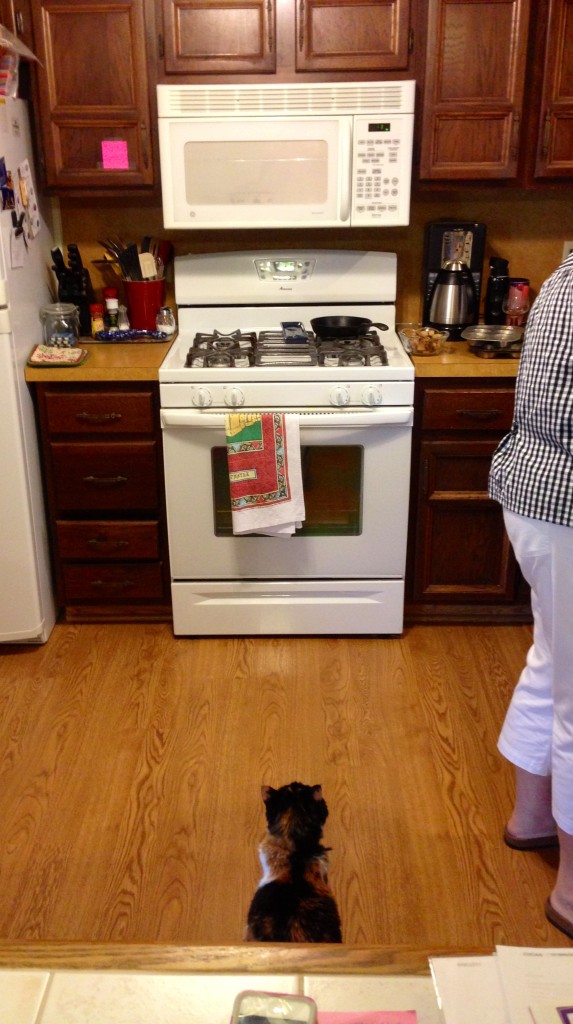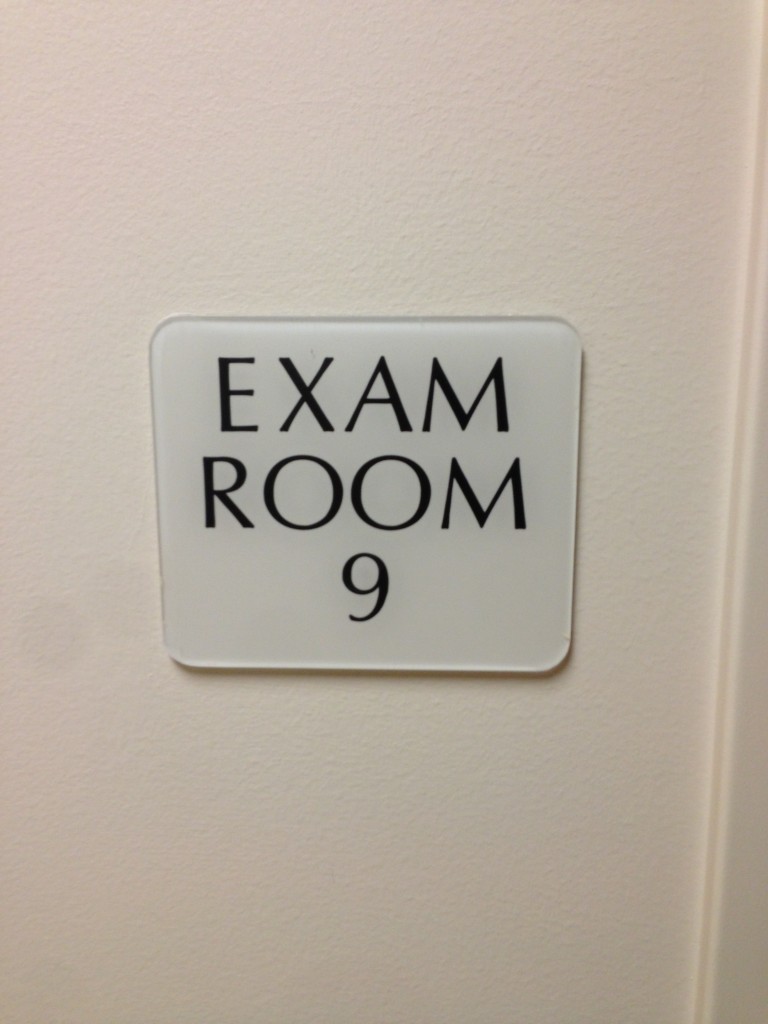
The number nine is an interesting one. The Chinese associate the word’s pronunciation with the pronunciation of another word meaning longevity. To them, it’s an auspicious sign. On the other hand, the Japanese shy away from its use on room and floor numbers because its pronunciation “ku” resembles the first syllable in the word “kurushii”, which translates to pain, agony, suffering and hardship. When I lived there, I was in apartment 110, and my next door neighbor was in 108. There was no 109. Multiply 9 by any number from 1 to 10, and the sum of the digits in the result will add up to 9. A curiosity for the mathematically-inclined, but I’ve been told in some ancient cultures the number was taboo for always showing up everywhere anytime you did basic arithmetic.
We started finding blood on the floor in various spots around the house in late August. As my cat, Waters, and I were sojourning at the house until I could get living arrangements sorted down in Lincoln, that left five possible sources between three humans and two cats, so at first we weren’t sure whose blood it was. A short investigation revealed that the source of blood was none other than Sidney, the old lady who at the age of eighteen was older than all of us by a mile, once you took into consideration that she was a cat.
Eighteen years is a long life for a cat. The last few years had seen her gradually slow down, sleep more, lose some of that mobility that allowed her to survey her territory from any perch she liked. But she seemed to be doing well in spite of general old age and the odd ailment, so the hope was that she would at least make it to Christmas for one last hurrah with the whole family in town. We crossed our fingers and took her to the vet to find out what was wrong. At first, the vet figured it was a simple bladder infection, nothing some antibiotics and painkillers couldn’t fix. Christmas would indeed be within reach, and if we were lucky, she might even see the thaw of spring. Either way, we’d know more after the regimen of antibiotics had run its course.
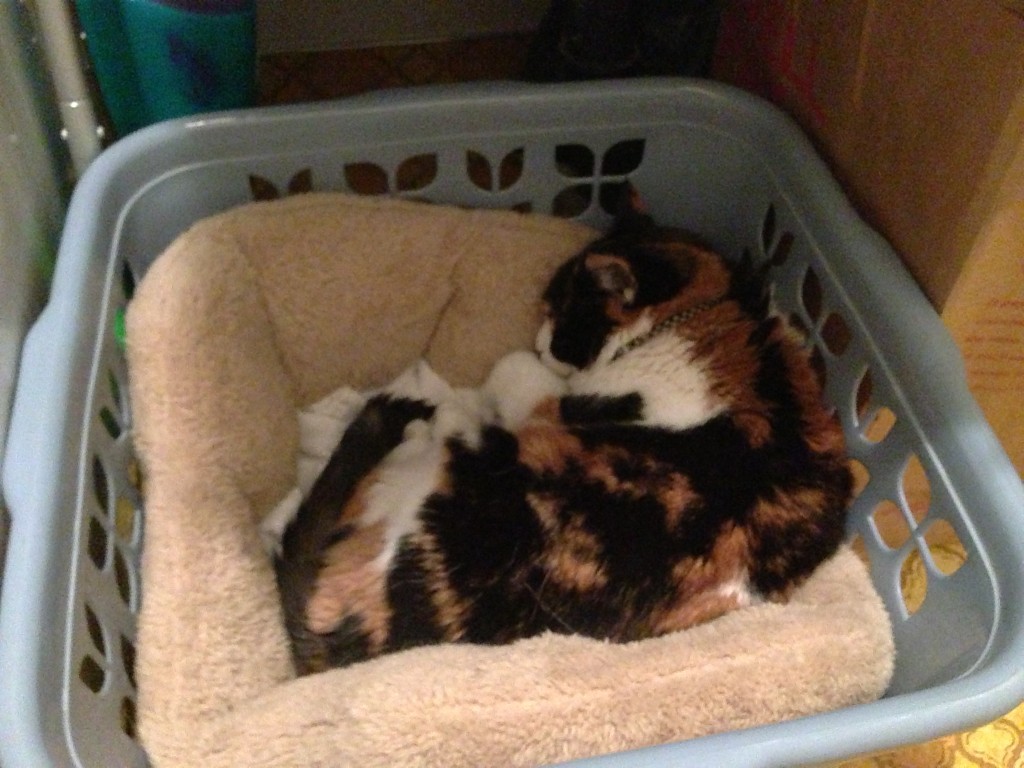
The laundry and pantry occupy the same space in the back of the kitchen. We normally keep the door closed, lest our four-legged family member stage a raid and we end up with cans or boxes or bottles or jars off of the shelves and onto the floor. The door was left open one day, and I walked in to find Sid curled up and asleep on a pile of clothes in the laundry basket. She had picked the perfect spot to camp out – away from the daily traffic of humans and the ever inquisitive and playful Waters, always cool, always dark, mostly quiet. And along with her gradually came all of her things. Her food bowl was placed just outside the basket. Her litter box eventually found its way in there too, once it became too difficult for her to make the trip downstairs. The once-forbidden section of the kitchen had become her living quarters.
The weekend after I moved down to Lincoln, I went back home for dinner and got the progress report.
The antibiotics and the painkillers seemed to be working at first. Sid stopped passing blood and the light in her eyes returned. But the infection was actually more than that, and just as soon as she started getting better, things took a turn for the worse. Ultrasounds had revealed a growth in her bladder. The vet began prescribing the kinds of things you prescribe when managing the pain overtakes treating the condition as the top priority. Months had become weeks, and the rules were simple – life would carry on in as close to normal fashion as possible, but we would not prolong things that didn’t need to be prolonged.
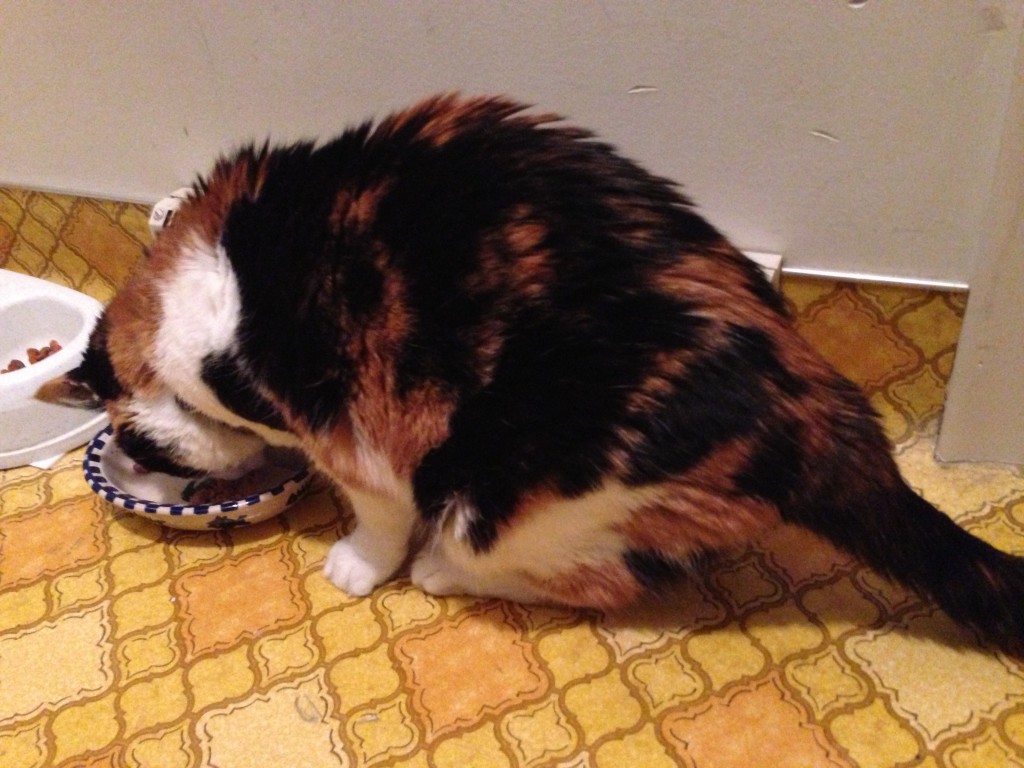
When our mouse Snowball died in 1987, I was too young to understand what it meant. I remember he had a lump in his leg and that made it hard for him to walk. I remember standing out in the yard with my dad and my younger brother and being told to say goodbye to him. His body was balanced on a spoon, and when we said goodbye, we lowered him into the hole dad had dug out for him, and that was that. I probably went back to watching He-Man afterwards like nothing had happened.
When our dog Penny died in 2006, I was too absorbed in my own world to notice. I knew that incontinence, arthritis and loss of sight were all taking their toll on her quality of life. She howled when the house was empty. But I wasn’t there when the family put her to rest. I just remember visiting the house one day and noticing that there was a box on the mantle, with her collar resting on top.
Nor had I been around for the death of three grandparents in the last six years, although I did make it to two funerals. Those particular experiences were difficult for me to assign an emotional value to. As anyone who grew up in a military household can attest to, moving around every so often and never living within easy reach of extended family members can make relationships tough to establish or maintain. I know people who have lived in the same area their whole lives, and to them the thought of not having aunts and uncles and grandparents and cousins around was completely foreign to them.
So I had a strange relationship with death. I knew it existed, and we had crossed paths a couple times, but I had managed to remain at arms’ length for thirty-three years. Nevertheless, when my parents told me the end was coming soon for Sid, I said I wanted to be there. It seemed oddly fitting that my first meaningful experience with death was going to be on account of a twelve pound ball of fur that generally didn’t have much use for me when she wasn’t hungry or didn’t want a lap to sit on or a scratch under the chin.
I got a text two days later asking me to call home. In our family, a request for a phone call usually carries a certain significance. Mom would always text to ask about the day-to-day stuff – what I am cooking, what kind of trouble Waters is getting into, whether I’m working or playing video games on a particular night or weekend. We all lead busy lives and value each others’ space, so calling just to say hi isn’t something we do a lot of. Before I called, I briefly considered the possibilities. Something happened to one of my brothers in the Army. A relative on the east coast was ill. Dad was in a car accident. Things like that. But I think I knew all along that it was going to be about Sid.
And so, on the ninth day of the ninth month, I called home. My suspicions would be confirmed – Sid’s health was deteriorating. She didn’t have months, and she didn’t have weeks. She had days. The blood returned, the pain management stopped managing her pain, she began eating less and suffering more. She refused lunchmeat, previously a highly sought-after snack. The roller coaster, having completed its ascent, was plunging in the other direction at break-neck speeds. Mom told me that the decision to put things to an end had been made, and she asked me to keep things under wraps until the week was out and my brothers could be given the news.
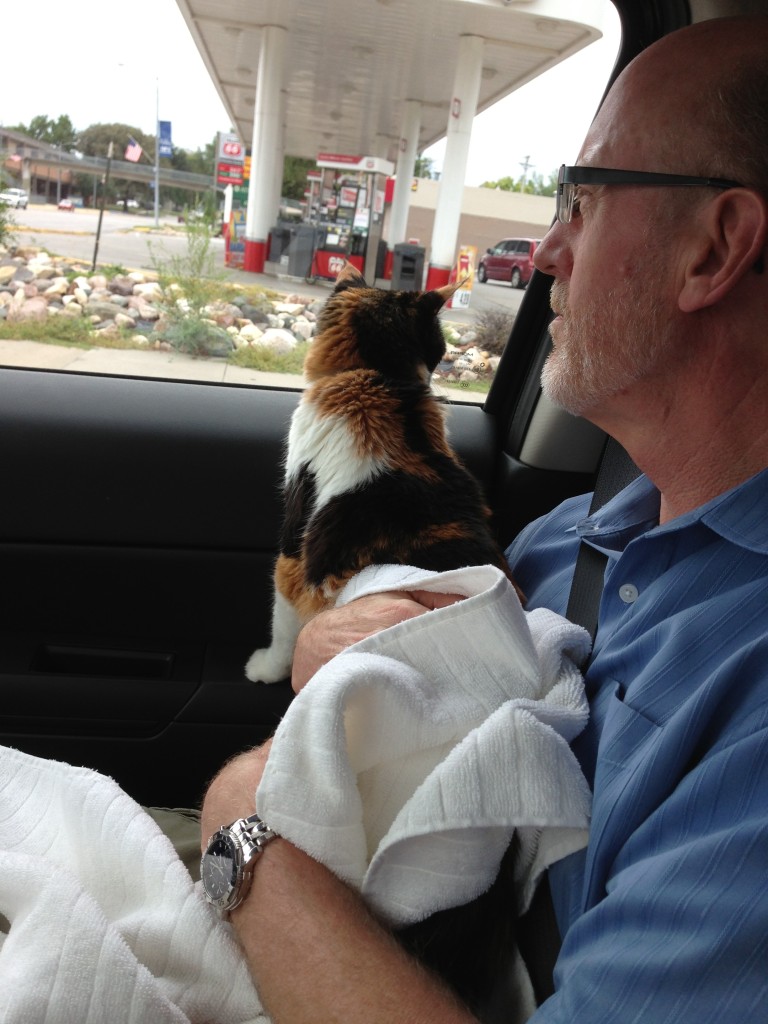
Sid was always smart enough to know when something was happening. When the luggage came out, she knew someone, or possibly everyone, was going away for awhile. When the kennel came out, she knew a trip to the vet was in her near future. Everything should have felt amiss to her on that last day. Life hadn’t been great the last few weeks. Tear-streaked faces became more commonplace. Dad was home from work that afternoon. Then I showed up. Then dinner came an hour early, without her even having to pester mom. Then we wrapped her up in a towel and piled into the car, completely skipping the ritual of trying to get her into the kennel along the way. She stood up in dad’s lap the whole way, looking out the window at the things we passed by. It was her first time riding in a car like that – unrestrained, free to move about the cabin. I marveled as I drove the four of us to the clinic at how, through the pain and the painkillers and the uncertainty of the situation, she retained her curiosity. I wonder if she knew something was going on. I wonder if she knew this was her last trip.
The wait in Exam Room 9 lasted for what seemed like years. We took turns holding Sid one last time, and waited in silence after the techs moved her to the next room to insert a catheter. I paced the floor, peeking through the window into the back area to see if Sid was on her way back. Finally, the vet arrived and explained how she would carry out the procedure and what would happen to Sid in the final thirty seconds. She gave us the option to leave the room, and we declined. I can see where people would be coming from if they didn’t want to be in the room to watch their pet die, but I wonder if it’s better for the pet to be in the arms of loved ones in those final moments, rather than being tended to by a stranger and wondering where their humans have gone.
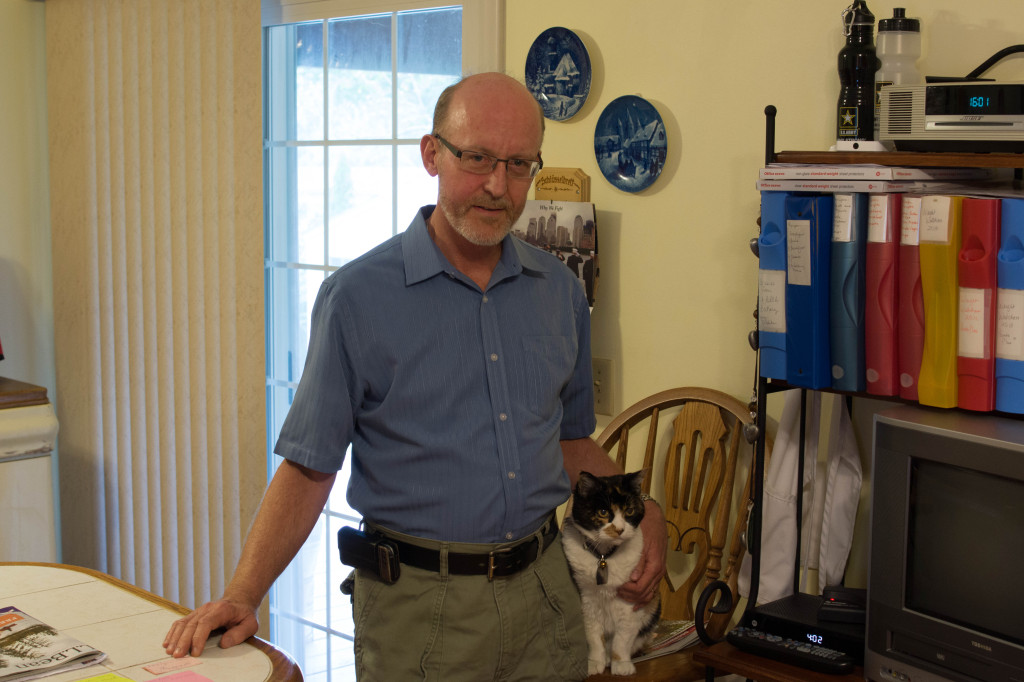
Those who are old enough to remember what it used to be like to wait at the departure gate at an airport know the rush of emotion that overwhelms you when the final boarding call takes place and you have to get your last goodbyes with your loved ones in before the gate closes.
Mom was always openly emotional, crying at the ends of books and movies or when one kid or another would head off to college or move out. And as for myself, I’d already gone to the tissue box a couple of times. I had held myself in check the whole week, but the reality of the situation hit home when I saw that we were being taken to Exam Room 9.
Dad, on the other hand, looked stable. He never let us kids see him in his moments of weakness. In an earlier stage of my life, I wondered if that side of him even existed at all – and that made it difficult to understand him at times. As time marched on, the misunderstanding turned to respect for what must surely have been the strength and willpower it took to be the source of level-headed thought and rational reasoning in the din of everyday life. I watched him hold it together when he spoke at the funerals of both of his parents. His speech was deliberately paced, punctuated by long pauses. You couldn’t tell if he was fighting to keep his emotions boxed in or simply measuring his next sentence. I tried to imagine if I would be able to muster that amount of strength, and my conclusion was that I wouldn’t.
But when the final boarding call came for Sid, he broke. For the first time in thirty-three years, I saw him cry.
Dad held Sid as the vet administered the dose of salvation through the catheter. Sid, being propped up on her hind legs, curled her head into his chest. I stroked her tail and watched as it swished one last time and came to a stop. The vet checked for a heartbeat, told us to turn the light off when we were done saying goodbye, and left the room. Dad stood there for the longest time, holding on to Sid and rocking her back and forth.
Then through the tears, he said simply, “she just went to sleep, right here”.
The three of us lingered for awhile, then rested Sid on the table and turned the light off on our way out.
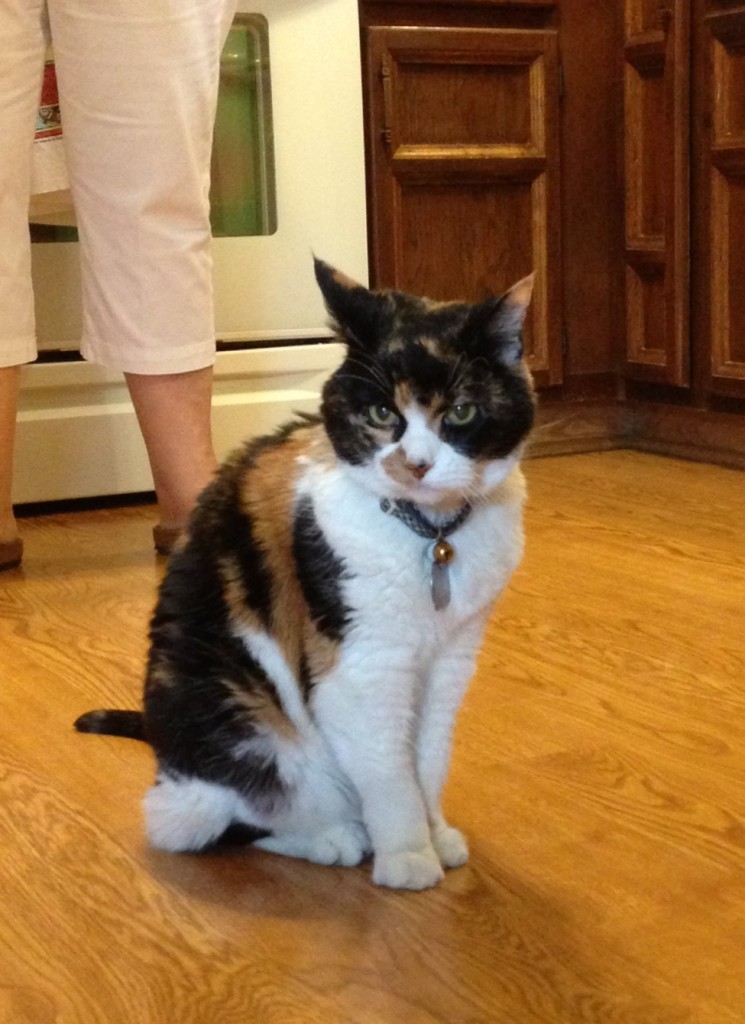
On the afternoon of September 11, 2013, with overcast skies and rain showers and the specter of the anniversary of the World Trade Center attacks hanging over the day, the number nine and its myriad associations took on yet another meaning for us. The longevity of eighteen years and the suffering of a few weeks had come to an end. The journey of Sidney’s nine lives was at its conclusion.
Death and I came to terms that afternoon. I learned who had the upper hand, who would outrun whom, who would win in the end. I handled things in the way I think is consistent with the march of technology and society – not quite liveblogging the death of a loved one as NPR’s Scott Simon did in the last remaining hours of his mother’s life, but still with a camera nearby and some brainpower reserved for framing the little details in the context of a story to tell others later – details like the stubborn recurrence of the number nine.
I have, over the course of the last ten years, relied on this website to serve as a personal sounding board whenever I’ve needed catharsis or to talk myself through problems or difficult choices. I formulated this particular post on the long, sad, silent drive back home after Sid passed on, and spent the rest of the night writing it. I thought it helped, and the next morning things were fine. But as the hours trudged on through the day at the office, I found myself absent-minded at meetings and needing to disappear from the view of others several times to pull myself back together. I came home that night and added more details and context to the post, stopping occasionally to watch as Waters joyously bounded from room to room, jumping from one perch to the next, tackling one toy mouse or another, occasionally stopping by her food bowl to reload or by the couch to visit with her human – a sure sign that things will return to normal one day.
When I moved into this apartment just a couple of weeks ago, I informally marked off a section of the living room wall as a section dedicated to the past. CDs, VHS tapes, and classic video games all line up on a media rack in that space, and hanging on the wall above are a picture from high school and a set of keychains an old friend gave me a long time ago. A picture of Sid now hangs on the wall, too – where she can keep an eye on Waters and myself, and where I in turn can continue to keep an eye on her, ever remembering the long hours spent watching TV as she slept on our laps, us kids howling with laughter as mom tried to chase her off of the top of a curtain rod, the midday snacks of lunchmeat and milk and the love affair with vanilla ice cream, chirping at the back door as birds flew by, and the story of how the runt of the litter picked us out at the pet store one spring afternoon in 1995 and graced us with eighteen years of love and joy.
